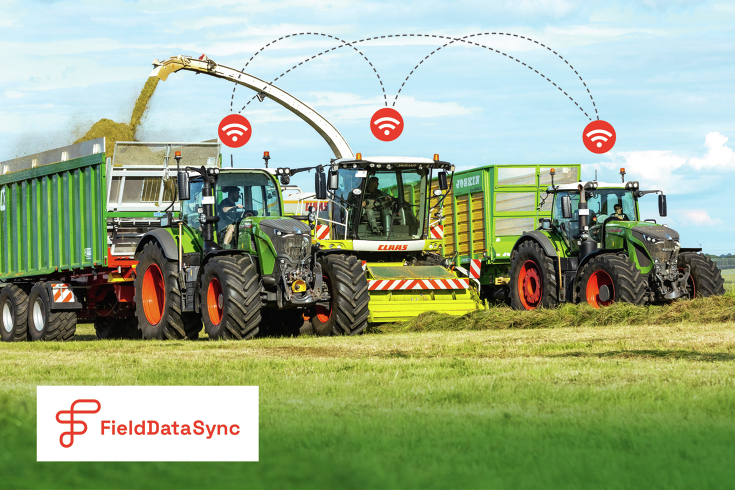
Until now, harvesting machines and tractors could only communicate and exchange data with other machines of the same brand. With machines from different manufacturers, this was only possible using workarounds such as USB sticks or cloud solutions. As part of the project, engineering teams from Fendt and CLAAS, along with additional partners, are developing a system that will enable wireless communication and cooperative control between machines from different manufacturers.
The consortium consists of the following partners:
- Technical University of Munich
- Saarland University of Applied Sciences
- Fendt
- LACOS
- OSB connagtive
- digisaar
The FieldDataSync project is also supported by the following associated partners:
- Agricultural Industry Electronics Foundation
- CLAAS
- ITK Engineering
- Maschinenfabrik Bernard Krone
- Satel
At the heart of this innovation lies a standardized communication interface that allows machines from different manufacturers to wirelessly communicate with each other via Wi-Fi. No additional infrastructure, such as a mobile network, is required, and harvesters and tractors can exchange position, speed, and other process data in real time. This data exchange enables the connected vehicles to be controlled fully automatically and decentralised.
In the first field tests in northern Germany, the machines from the two manufacturers worked together in a platoon for the first time. These machines formed a network to communicate wirelessly and in real time, coordinating their driving and working strategies while reacting dynamically to environmental conditions. This is intended to significantly boost the efficiency and accuracy of agricultural processes involving multiple vehicles, regardless of the manufacturer. At the same time, the system prevents delays and collisions during unloading, thereby improving safety in the field.
The project's findings will serve as the basis for future guidelines from the Agricultural Industry Electronics Foundation (AEF), defining the wireless exchange of information between agricultural machinery. The next steps are, firstly, the integration of additional functions, such as diagnostics and safety, and, secondly, testing with larger vehicle fleets.
In addition to platooning, other functions are also being developed as part of the FieldDataSync project, including the automatic synchronisation of process and task data, the integration of sensor technology and the transmission of application maps in real time. Over the next few months, testing will be expanded to cover other regions and application scenarios. The following functions are being considered as part of the funded project:
- Workgroup management
- Platooning
- Common coverage map
- Exchange of ISOBUS data
- Video streaming
- Controlled traffic farming
Funding
The project is funded by the Federal Ministry of Food and Agriculture (BMLEH) based on a resolution passed by the German Bundestag. It is managed by the Federal Office for Agriculture and Food (BLE) as part of the ministry's digitalisation strategy.


